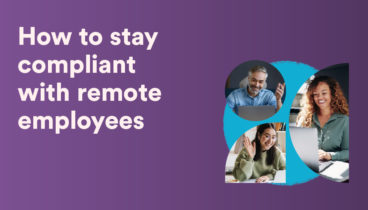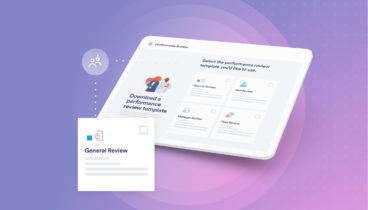How can leaders improve employee productivity while still saving time? Here are the top 10 things you can do to increase employee efficiency at the office.

As the world of work continues to shift, employers must keep looking for ways to build employee efficiency. For many employers looking into how to improve efficiency, remote work is the way to go. One study found that productivity rose 47% for employees working from home.
But not all employers are embracing a remote-first philosophy. According to a Workest survey, 67% of respondents said their employer was preparing to bring them back to the office.
How to increase work efficiency among employees
So, how can managers improve employee productivity in general? Here are 10 tips on how to improve work efficiency in your employees.
1. Don’t be afraid to delegate
Prioritizing quality outcomes is what makes a business successful. However, doing the heavy lifting yourself, instead of delegating, is a monumental waste of time. This is valuable time you could have spent exploring avenues to grow your business.
It’s important to delegate responsibilities to qualified employees, and trust that they will perform the tasks as required. This gives your employees the opportunity to gain new skills and leadership experience that will ultimately benefit your company. You hired them for a reason, now give them a chance to prove you right.
2. Match tasks to skills
Knowing your employees’ skills and behavioral styles is essential for maximizing efficiency. For example, an extroverted, creative, and out-of-the-box thinker can come up with great innovative ideas. However, they might struggle with mundane, unstimulating work.
So, before giving an employee an assignment, determine whether they are the most suitable person for the task. If not, find someone else, whose skills and work styles align with the task requirements. This is especially critical if the job requires customer service. These employees need to have the appropriate skills to deliver customer satisfaction.
3. Communicate effectively
It’s common knowledge that effective workplace communication is key to workplace efficiency. However, communication is a multifaceted practice, with many levels. For example, it can be verbal or nonverbal. What’s more, communication has numerous channels, including
- In person
- Phone call
- Text messaging
- Messaging apps
- Social media
- Company website tools
To help ensure smooth communication, you will need to utilize the communication method that best fits the situation. You must also promote healthy internal and external communications, including among:
- Leaders
- Managers
- Employees
- Customers
- Suppliers/vendors
Despite the importance of effective communication, studies show that it is lacking in many organizations. In 1 survey, only “7% of U.S. workers strongly agree that communication is accurate, timely and open where they work.”
Ultimately, to be effective, communication must be accurate, timely, and dependable.
4. Keep employee goals focused
Employees cannot be efficient if their work goals aren’t focused. In other words, if a goal is not clearly defined or actually achievable, employees will be less productive. So, make sure employees’ assignments are as clear and defined as possible. Let employees know exactly what you expect of them, and explain how those expectations can benefit them and the organization.
For example, you can leverage the “SMART” goal-setting model — meaning the goal should be specific, measurable, attainable, realistic, and timely. Before assigning an employee a task, see it meets each of the SMART requirements. If not, tweak the goal until it does.
5. Incentivize employees
Recognizing employees for a job well done makes them feel appreciated and boosts employee engagement, which encourages them to continue increasing their productivity.
When deciding how to reward employees, it’s important to consider their individual needs or preferences. For example, one employee might appreciate public recognition, while another may prefer a private “thank you.”
In addition to words of gratitude, here are a few incentives you can try:
- Additional PTO. You can offer extra paid time off, outside of the employee’s regular paid vacation or sick time.
- Take them out for a meal. You can take the team out to lunch, dinner, or happy hour. For remote employees, you can send them a GrubHub or DoorDash gift card.
- Handwritten thank-you note. Employees will appreciate you taking the time to actually hand-write the note.
- Lazy Monday coupons. This allows employees to arrive late on a Monday morning.
- Tell your boss about the achievement. For example, copy your boss on your email to your team thanking them for their work. This can do wonders for team productivity.
- Provide a health and wellness program. This helps you promote healthy living among employees, plus reduces health insurance spending across the board.
6. Cut out the excess
For example:
- Do not give employees unnecessary smaller tasks when they are focused on a larger goal.
- See if there is anything that you can eliminate so employees will have more time to focus on higher-priority assignments.
Let’s assume you ask your employees to provide you with daily progress reports, but you’re also very busy. To save on reading time, consider limiting the length of the daily reports to a specific word count.
In addition, make sure your delegated activities are necessary, and not just a formality. If they serve no useful purpose, then they are barriers to business efficiency and should be removed.
7. Train and develop employees
Reducing training, or cutting it all together, might seem like a good way to save time and money. However, requiring employees to learn their jobs on the fly will likely backfire. The bottom line is that employees need training to do their jobs properly.
In addition to initial training, encourage continued employee development.
So, make sure your employees receive sufficient training. This way, they can develop the confidence needed to do their jobs, and your time won’t be wasted down the road answering simple questions or correcting errors.
In addition to initial training, encourage continued employee development. This will help employees expand their skills and advance in their careers. It will also provide you with a future-ready workforce.
Ways to support employee development include:
- Individual coaching
- Workshops
- Courses
- Seminars
- Job shadowing
- Mentoring
- Tuition reimbursement
- Increasing job responsibilities
8. Embrace telecommuting
You might be hesitant to permit remote or hybrid work, due to the distance involved. After all, how can you guarantee that your employees will still be productive if no one is physically watching them? But remote work is the new normal, and employers must adapt as needed.
Of course, not every job can be done from home, or from remote locations. However, with job seekers and employees prioritizing workplace flexibility, employers should consider offering telecommuting options if possible.
Let’s assume an employee caught a cold and doesn’t want to infect their coworkers, but they can still work productively from home in some capacity. If you don’t allow them to work from home, they will be forced to take a sick day and skip working altogether.
Telecommuting options are especially helpful to employees with childcare or eldercare responsibilities. With 78.5% of U.S. families having at least 1 employed person in 2021, you likely employ working parents (or will at some point). So, if you haven’t already, see how telecommuting can increase productivity, and implement measures accordingly.
9. Encourage 2-way feedback
In order to improve their performance, employees need to know where they are falling short. This is why performance reviews are essential. Measure your employees’ performance, then hold individual meetings to let them know where they are excelling, and what areas they need to work on.
Increasing employee efficiency isn’t just about what employees can do better. Some of the responsibility falls on you, the business owner (or manager), as well. This makes improving employee efficiency a joint effort.
When reviewing your employees’ performance, ask them what you can do to help them improve. This way, all the bases will be covered, both from your perspective and the employee’s. Asking for feedback not only helps you find reliable ways to strengthen employee performance but also encourages a culture of open dialogue.
10. Think big picture
Things that might seem like an inefficient use of time to you now, may actually benefit you in the long run. So, before vetoing an apparent misuse of time, ask yourself whether it could be an asset in the future.
One big-picture item all employers should consider is human resources software. Investing in HR software can save your business — and your employees — countless hours down the road.
By automating and integrating HR, benefits, and payroll, the technology:
- Improves operational efficiency
- Reduces employee frustration
- Helps your business grow
More specifically, it can help with:
- Repetitive tasks
- Workflow management
- Time management
- Team building
- Team efficiency
- Process flow
- Administrative tasks
- Employee satisfaction
- Business goal achievement
- Overall efficiency for a small business
- Greater efficiency for a large business
HR software can also enhance the customer experience and deliver a more stable work environment
Employee efficiency drives business success
To make it happen:
- Don’t be afraid to delegate
- Match tasks to skills
- Communicate effectively
- Keep employee goals focused
- Incentivize employees
- Cut out the excess
- Train and develop employees
- Embrace telecommuting
- Encourage 2-way feedback
- Think big picture
If your vision includes modern technology, consider giving Zenefits’ HR software a try.
This post was originally written in 2015 and has been updated.






